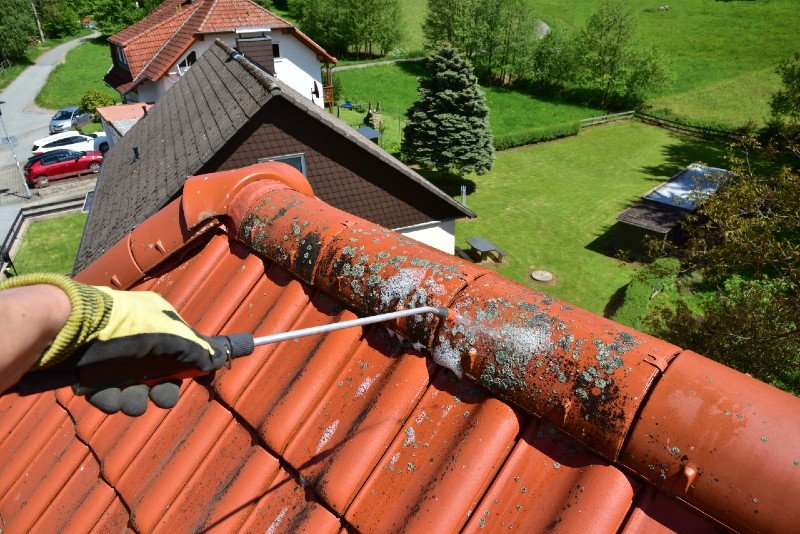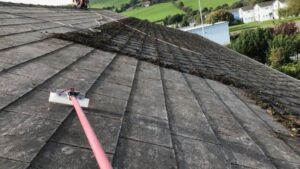Moss growth on roofs is a common problem, especially in areas that experience heavy rainfall. While moss can give a home a charming, rustic appearance, it can also cause significant damage over time. Moisture retention, shingle deterioration, and structural issues are just a few of the problems associated with unchecked moss growth. Managing moss removal during the rainy season presents unique challenges, but with the right approach, it can be done safely and effectively.
Understanding Why Moss Thrives in Wet Conditions
Moss flourishes in damp, shaded environments. During rainy seasons, the constant moisture creates the perfect conditions for moss to spread rapidly. Unlike other plants, moss does not have roots but absorbs water through its leaves, allowing it to grow on various surfaces, including roofs. The combination of moisture and organic debris, such as fallen leaves, accelerates its growth.
If left untreated, moss can lift shingles, create water retention spots, and lead to leaks. The added moisture can weaken roofing materials and cause mold growth, which further deteriorates the structure. This makes timely moss removal crucial, even in challenging weather conditions.

Choosing the Right Time for Removal
Although removing moss in the middle of a rainstorm is not advisable, it is possible to manage the process strategically. Choosing a dry day within the rainy season is the safest approach. If waiting for a completely dry period is not an option, working during a light drizzle or when the roof has had time to dry slightly can reduce safety risks.
It is essential to avoid removing moss during heavy rain because wet roofs are slippery, increasing the risk of accidents. If possible, wait until the rain subsides and check that the roof has dried enough to walk on safely.
Safety Precautions Before Starting
Safety should be the top priority when dealing with moss removal, especially during rainy seasons. Roofs become more hazardous when wet, and extra caution is necessary to prevent falls and injuries.
Wearing non-slip shoes with good grip can help maintain stability. Using a sturdy ladder with stabilizers and having a partner to assist can add another layer of security. Harnesses and roof anchors are recommended for those working on steeply sloped roofs.
Additionally, it is advisable to check the roof’s structural integrity before starting. If any areas appear weakened by moisture damage, professional assistance may be needed to avoid further deterioration.
Using the Right Cleaning Methods
There are several ways to remove moss from a roof, and the best method depends on the severity of the growth and the type of roofing material.
A gentle approach using a garden hose and a soft brush can be effective for light moss buildup. Spraying water downward prevents damage to shingles while loosening the moss. For thicker moss growth, a specialized moss removal solution or a mixture of water and mild detergent can be applied before gently scrubbing the affected areas.
Using a pressure washer is not recommended, especially during the rainy season, as the force of the water can damage shingles and force moisture underneath them, leading to leaks. A controlled and careful cleaning process is the best way to preserve the roof’s integrity. Professional Roof Moss Removal Hillsboro Oregon services use safe and effective techniques to eliminate moss without compromising the structure of your roof.
Preventing Moss Regrowth
 Once the moss has been removed, taking preventative measures can help ensure that it does not return quickly. Zinc or copper strips installed along the ridge of the roof can inhibit moss growth over time. When it rains, small amounts of these metals wash down the roof, creating an environment that discourages moss development.
Once the moss has been removed, taking preventative measures can help ensure that it does not return quickly. Zinc or copper strips installed along the ridge of the roof can inhibit moss growth over time. When it rains, small amounts of these metals wash down the roof, creating an environment that discourages moss development.
Trimming overhanging tree branches allows more sunlight to reach the roof, helping it dry faster and reducing the likelihood of moss returning. Clearing gutters and removing debris regularly also prevents excess moisture from accumulating, which can contribute to moss growth.
Another effective preventative step is applying a moss-resistant treatment to the roof. These treatments, available in liquid or granule form, can be applied after cleaning to slow down moss regrowth. Ensuring proper roof ventilation also helps in reducing moisture buildup.
When to Seek Professional Help
Although DIY moss removal is possible, there are times when professional assistance is the best option. If the roof has extensive moss coverage, significant damage, or is too steep to work on safely, hiring a professional roofing contractor can ensure the job is done properly.
Professionals have the experience, tools, and safety equipment necessary to remove moss efficiently without damaging the roof. They can also inspect the roof for hidden issues, such as leaks or weakened shingles, that may require repair.